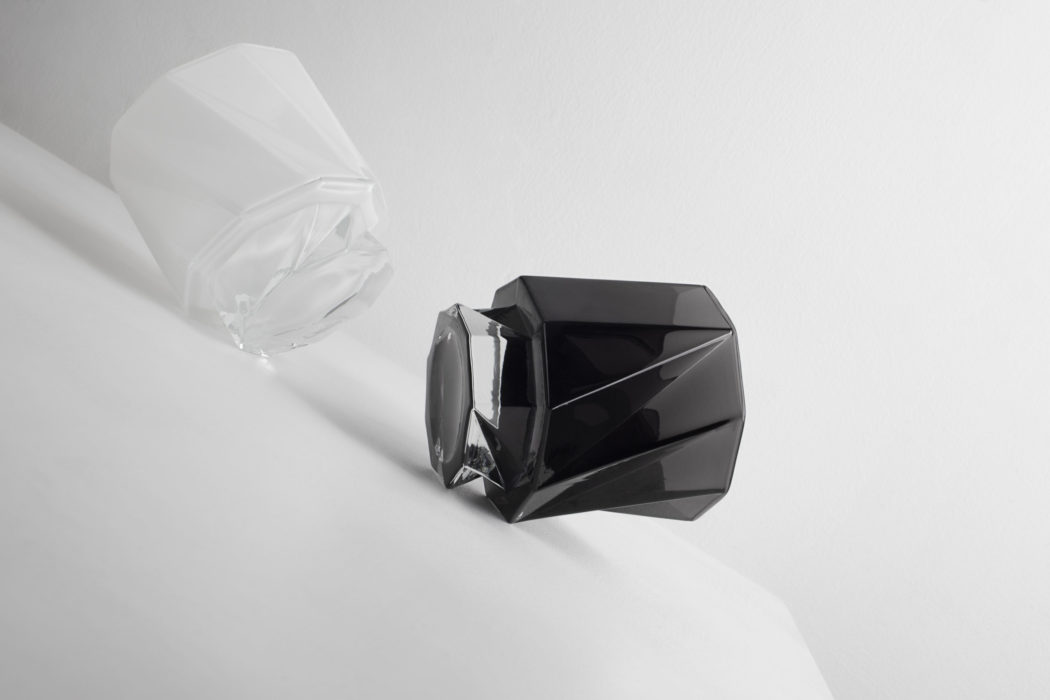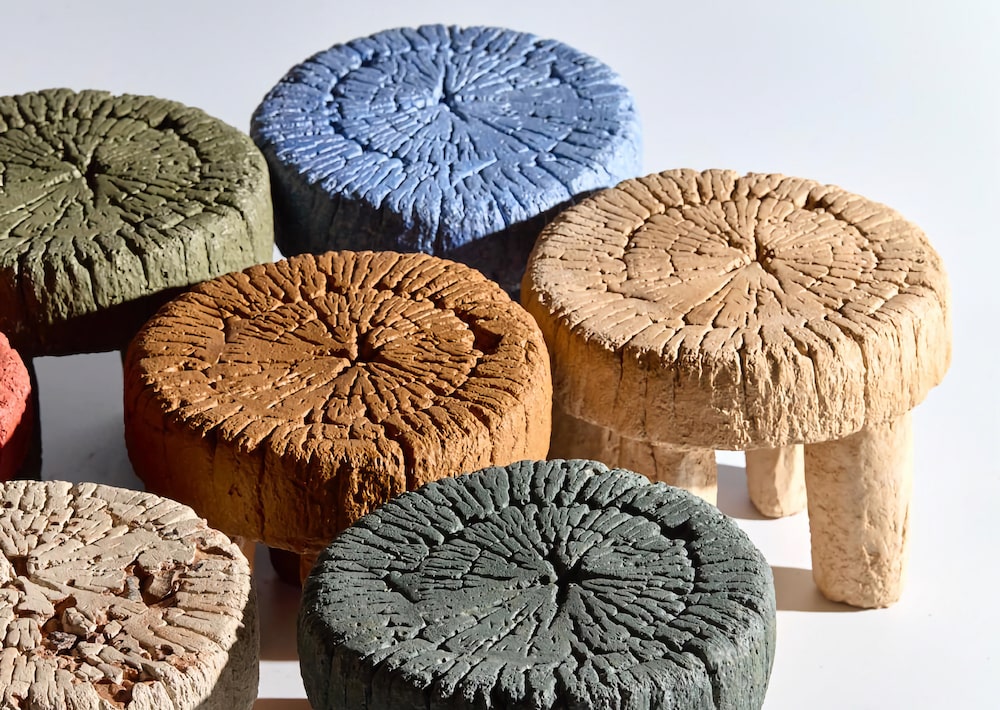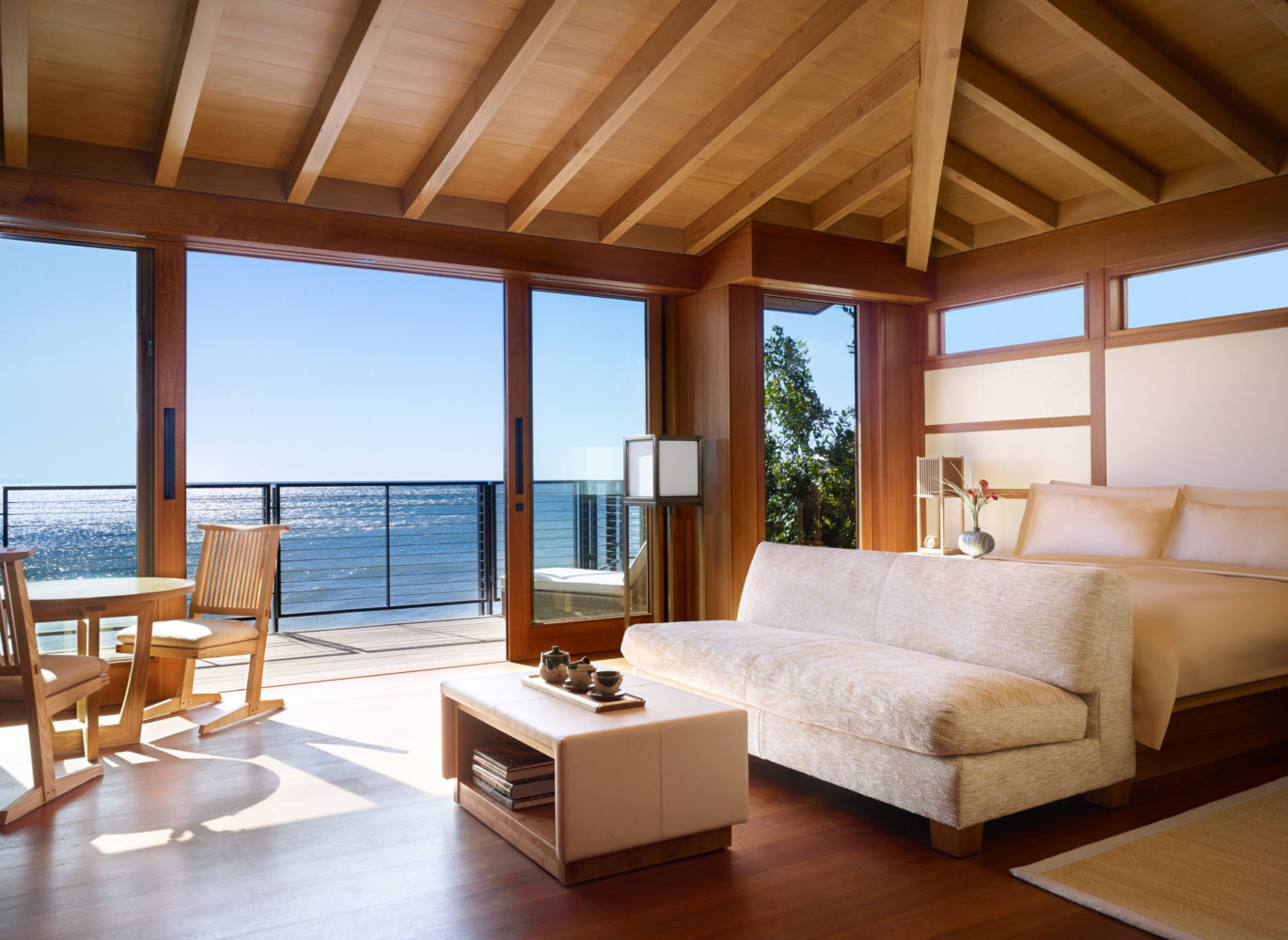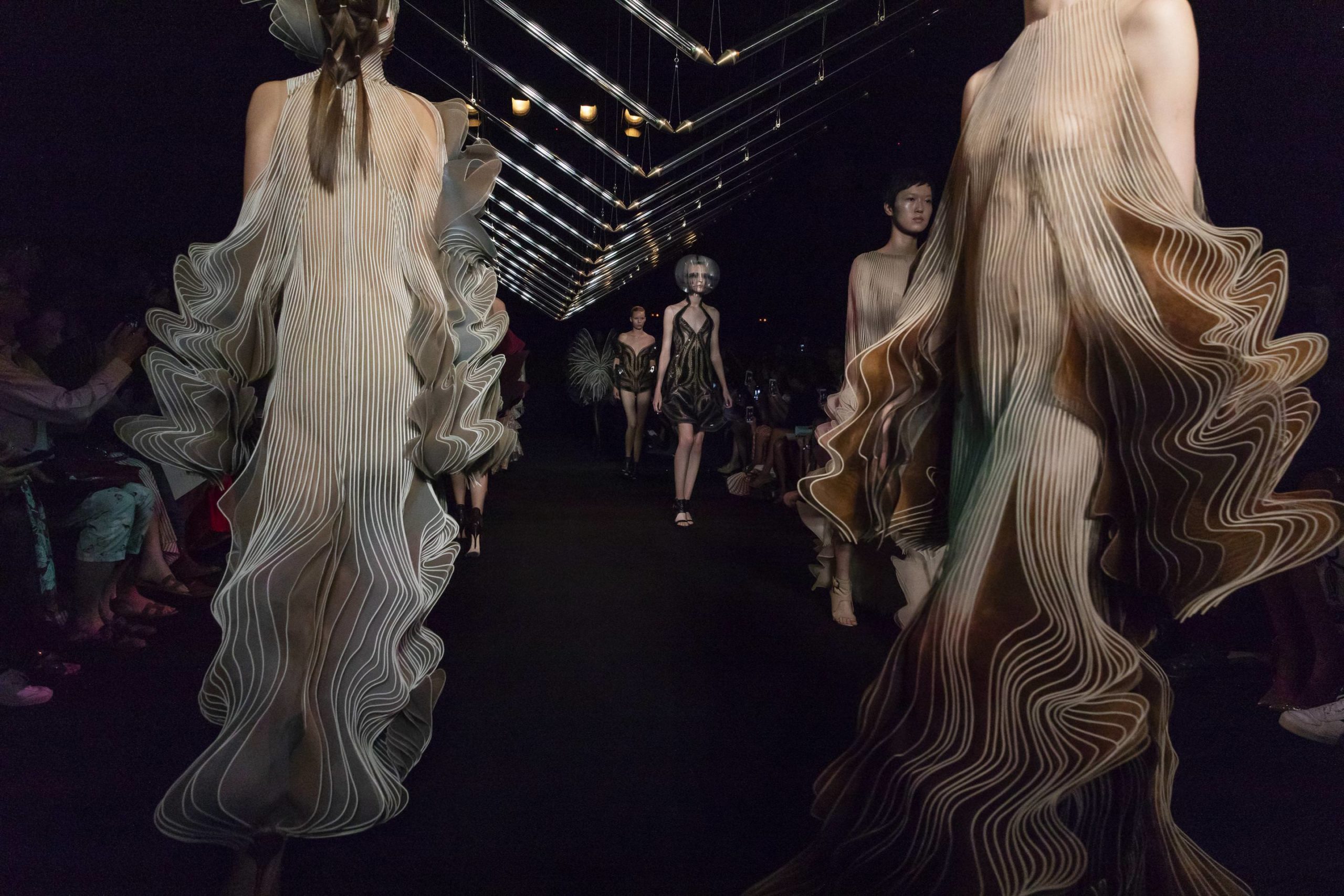The Dusseldorf-born designer Maximilian Eicke has been creating design objects with his label MAX ID NY since 2009. Upon graduating from Griffith College in Dublin, he launched his brand at just 20-years-old to focus on functional design and a cadence of craftsmanship. Dedicated to sourcing high-end materials and craftsmanship from around the world, MAX ID NY has recently ventured into the tabletop and homewares market by expanding to include porcelain ceramics, hand-blown glassware, and stainless-steel cutlery.
Based between Sag Harbor and Bali, his studio today focuses on home furnishings and design objects—from furniture and lighting design to glassware and cutlery—and has launched over 10 collections. Lately, Eicke has been hard at work on his home-away-from-home residence in Bali, which he designed and built. To furnish the space, he’s been working on a collection of furnishings, glassware, and tabletop designs that he’s launching for the public this week, too. The new offerings highlight Max ID NY’s foray into glassware with the “Ghost” collection, which features a modern take on a vintage glass. Max ID NY is also gearing up to present two new spaces—one digital, which officially debuts its online shop this week, and soon one physical in Philadelphia.
Whitewall spoke with Eicke to hear how his family’s background in art impacts his decisions in design, and what’s available on his new site now.
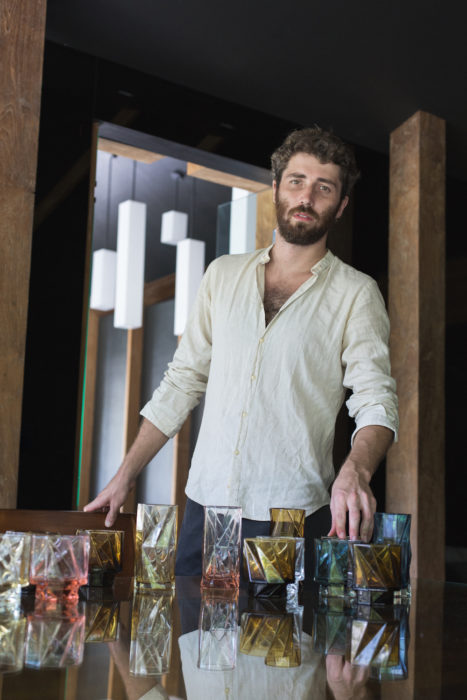
Portrait of Maximilian Eicke by Tomasso Riva.
WHITEWALL: When you were growing up, your parents were involved in the art world. How did that impact your decision to go into design? Did you anticipate going against the grain of your family’s fine art and antique business?
MAXIMILIAN EICKE: I was very fortunate to be born into this world, with parents who made a life out of loving, living with, and buying/selling art. It was never just a business for them and our family. Art and antiques were ingrained into every single second of my life growing up… for better and sometimes for worse. As a young kid, our “beachside” family vacations were often spent looking at the beach through a window at the shop of a random antique dealer whom my dad discovered that morning. But at the same time every year I became wiser. I started to see and genuinely appreciate the incredible opportunity that I was given to experience a world that is very much a mystery to many.
One thing became apparent throughout my life, which was surrounded by antiques. It was always tough to keep on top of following the trends of the art and antique market. Every few years the direction would change drastically and items that were purchased at the height of one trend would then sit in our warehouse when that trend passed waiting for it to return. Sooner or later they do, but this can be ten to twenty years later.
So, I used this as an analytical approach when seeking out a way to be adjacent to the family business but to create my own reputation. I discovered that I wanted to create furniture that was minimalist in design but could also portray a timeless aesthetic and jump between trends. In the bigger scheme of things, my company will always stay and will diverge from what is trendy for the moment. I might feed into certain aspects of a trend such as using trend-forward colors, or materials, however, the physical designs will always remain inspired by the same aesthetic—whether it’s trendy or not that season.
WW: Your design aesthetic represents similarities found in minimalistic art movements, such as Bauhaus and De Stijl. Why?
ME: It might seem unusual to say, but art has been as much an inspiration for me as it has also been a burden. When I was in middle school, I felt that being inundated with art every day of my life would inevitably overwhelm my senses to the point that I would want nothing to do with it in my professional career.
That was until I discovered the Bauhaus and De Stijl movements, and I decided to not see art as a burden but as something that can bring pleasure and passion to my life. Very quickly turning from a passion to what some may even deem an unhealthy obsession, art has shaped my business into what it is now and has given me plans for my future.
WW: You’re based between Bali and Sag Harbor. Does being based in these locations impact the way you see design or approach your projects?
ME: I only discovered Bali after I set out to become a furniture designer after college, so it didn’t have an initial impact on the forms and aesthetics of my designs. That quickly changed, however, once I was fortunate enough to interact with manufacturers that would let me experiment with materials and a quality that I never thought possible.
The wonderful thing that happened that had a very organic connection between both locations was that I decided to venture into creating outdoor furniture thanks to Indonesia’s strong reputation for high-quality teak furniture and the love for outdoor backyard living native to the Hamptons.
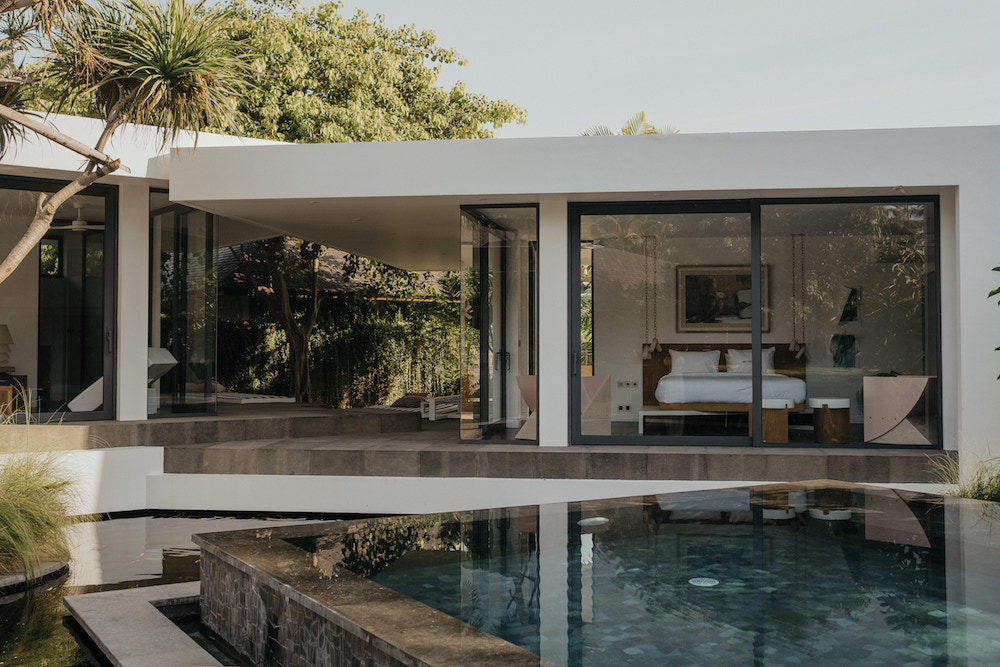
Courtesy of Maximilian Eicke.
WW: Can you tell us a bit about the collection of furnishings, glassware, and tabletop designs that you’re launching this week?
ME: 100 percent of the designs that we are launching during the end of this year are directly associated with my architectural compound that was just completed in Bali, Indonesia.
Expanding from an original idea to just do the architecture and furnishings myself, I decided to add additional challenges over the duration of the project and tackle the entire range of tabletop and accessories used in the house as well. I took this on in part as an excuse to source new manufacturers outside of my existing roster that had capabilities beyond what I was used to working with, such as glassblowers, lighting manufacturers, and ceramic artists.
WW: The collection was prototyped for your private residence in Bali, which you recently designed and built. Tell us a bit about your space in Bali.
ME: The space started as a dream almost five years ago to create a new family home, and, with no shortage of hassles, was finally completed while we were quarantining there during the initial shutdown from Covid-19. Due to it being designed as a family compound this concept helped shape the architectural layout of the land, the amount of bedrooms to be built, and the type of spaces that the property required.
The bedrooms were designed as sets of two—two master bedrooms and two guest bedrooms that while both being architecturally different would also have a lot of commonalities.
It was a focus to design the bedrooms all spaced apart from one another so everyone would still have a sense of privacy, but it was just as important to create comfortable spaces where everyone could come together with indoor/outdoor living rooms and also indoor/outdoor dining rooms that would be the center of entertainment for my family and guests. With most of the seating and entertainment environments reflective of mid-century design with sunken living rooms, the whole space is designed to have every surface outside of the bedrooms be used for seating and conversation, including the steps that double as benches all throughout the property.
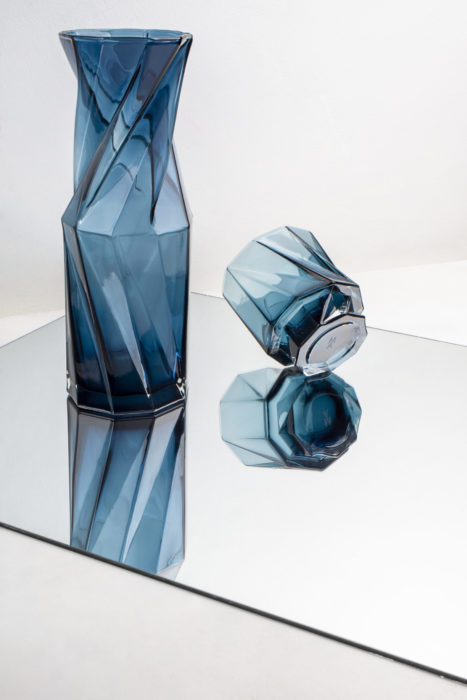
“Ghost” collection, courtesy of Maximilian Eicke.
WW: How does this collection embody characteristics that match up with its design?
ME: The strong visual cues that are carried through are the forms of geometry used in the house that translate to the collection, from the facets in my glassware that are very reflective of the main house’s steel beam roof structure, to the ceramics collection, which is inspired by the materials and color palettes of the natural stones and textures used throughout the project.
WW: Why are you dedicated to craftsmanship and working with artisans around the globe for goods like porcelain ceramics, hand-blown glassware, and stainless-steel cutlery?
ME: I was raised to be very handy by my father and my grandfather. They always wanted to make sure that from a young age I knew how to hold a hammer and fix things around the house. Little did we know at the time that I would take it many steps further and that it would become an obsession for me to figure out how things are made. Initially building all my own prototypes and using what knowledge I had learned from various apprenticeships in wood and metal to start out my career in design, my need for knowledge did very quickly exceed my own physical capabilities.
I decided I should take what I know and apply it to a talent for sourcing and manufacturing with third-party vendors instead of creating product solely myself. This let me find a perfect balance of being able to control the end result, but also making sure that what I was delivering for clients was the best possible product that could be achieved. So with this ability, I was able to slowly build up a strong network of manufacturers over the years that I have worked closely with focusing heavily on each of their craftsmanship strengths to bring our their talents in my designs.
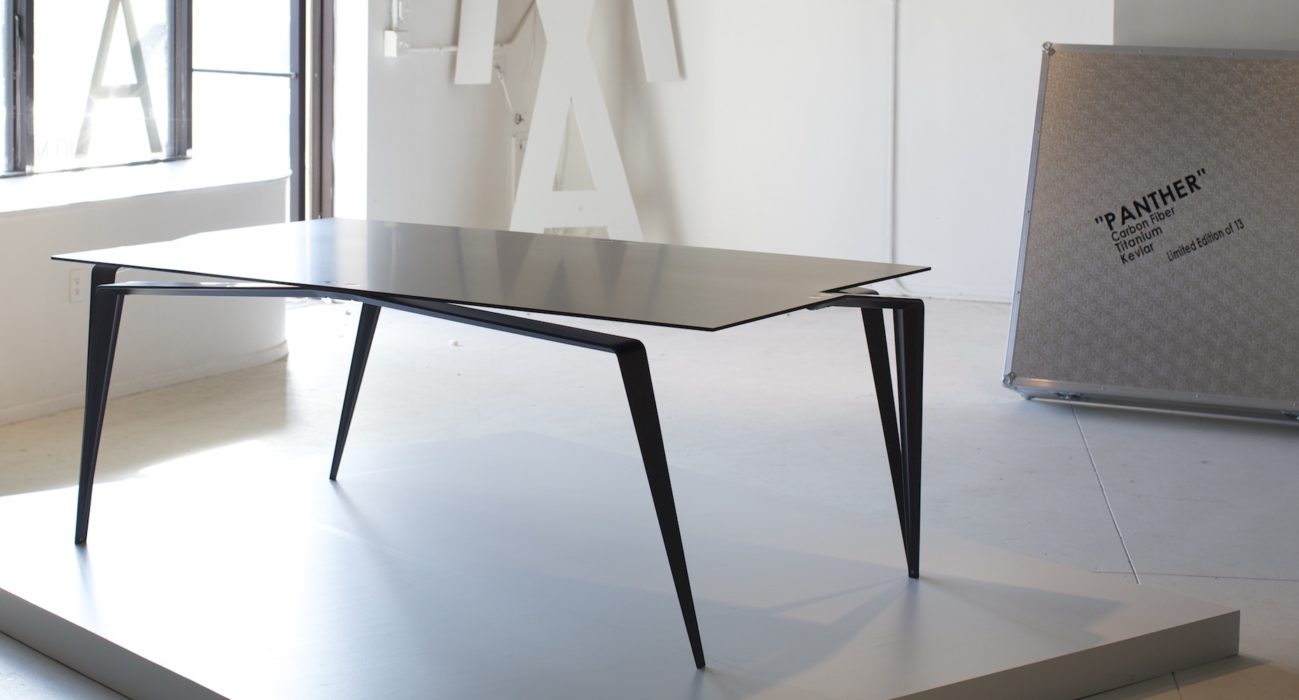
Panther table, courtesy of Maximilian Eicke.
WW: You are also set to open a 5,000-square-foot space in Philadelphia at the Showroom 2220 venue. What is the design of this space like, and what will be available?
ME: We are opening a showroom in what one could only dream of as the perfect raw industrial loft. Inhabiting 5,000-square-feet of a 100,000-square-foot building, the space was taken over as a raw, red brick space with windows on both sides to flood the showroom with natural light. We are redesigning it as one large raw space used to create several moods and vignettes reflecting the specific pieces we plan on featuring.
From creating a minimalistic living room setup with our modern designs based around my newest upholstered collection “Soft,” to a room which is intended to look more like Leonardo da Vinci’s attic space that will have a mix of antiques and paintings with items from our antique inventory. This will be the first time that we take our antique inventory and have it available for sale online.
WW: You’re also aiming to launch an official online shop for Max ID NY. What does going digital mean for your brand? What will be offered here that isn’t elsewhere?
ME: My online shop is live and items are for sale now, in time for the holiday season. At first, a limited number of designs will launch with the site and over the coming weeks and months will expand to encompass a full range of homeware, tabletop, furniture, antiques, and paintings.
As much as I like to claim that my style of design came out of rebellion to my parents’ antique business, I always knew that someday it would come full circle, and I would find a way to integrate their business into mine. It’s finally that time now. Of course, there is a stark juxtaposition between our two offerings. They, however, work very cohesively due to my obsession with choosing solid natural materials in most of my designs and my respect for quality through craftsmanship.
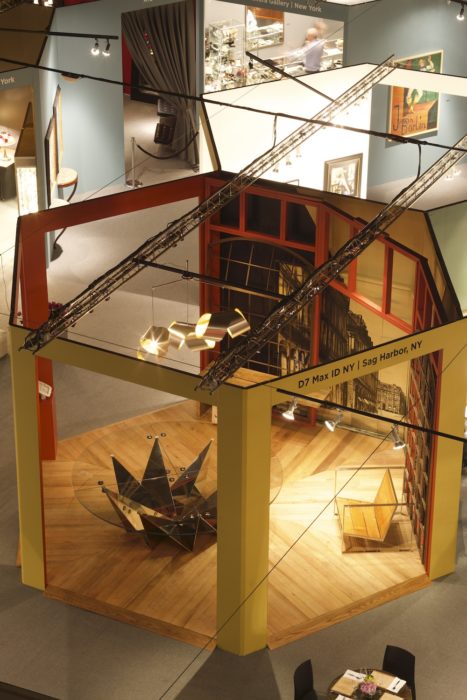
Max ID NY at the Spring Masters at the Park Avenue Armory, courtesy of Maximilian Eicke.
WW: Since its inception in 2009, your label Max ID NY has launched ten collections, including ceramics and lighting—some seen in shows like New York’s Spring Masters at the Park Avenue Armory. How would you say your aesthetic evolved in the past 11 years?
ME: In a funny way I think I am going right back to where I started. My initial collection revolved around the concept of NYC apartment living and designing accessory furniture items. I felt since I was new to the business it would be too soon to expect my designs to be picked as focal points in a room, so I focused on designing items that I felt were always missing in people’s households to round out a room.
That collection revolved around side tables, hall chairs, and dining chairs—accessory furnishings that would work for both a client who is in the middle of redecorating, while also catering to the client who already is settled but just wants to add some design to their space. This strategy worked out as it led to a successful first season of sales.
Over the years, I still focused on the smaller items as my bread and butter, but definitely placed a large focus on creating the show-stopping designs that will only eventually find their home with a few clients. A strategy that worked well having placed these items in many private home collections and several museum collections. Seeing the attention-grabbing larger items helped strengthen my strong core of smaller designs that could be purchased afterwards.
In 2019, I started to analyze where I think my business needs to move in the future and felt it was time to focus on the small items again and build from there. I still continue to offer existing designs from all previous collections, in addition to launching a new upholstered furniture collection. However, I will strongly focus on creating much more broad-ranging and accessible designs. That said, I can confidently state that my aesthetic has not changed in 10 years. The only thing that has changed is our quality gets better every year, so we are able to push our aesthetic to higher levels.



